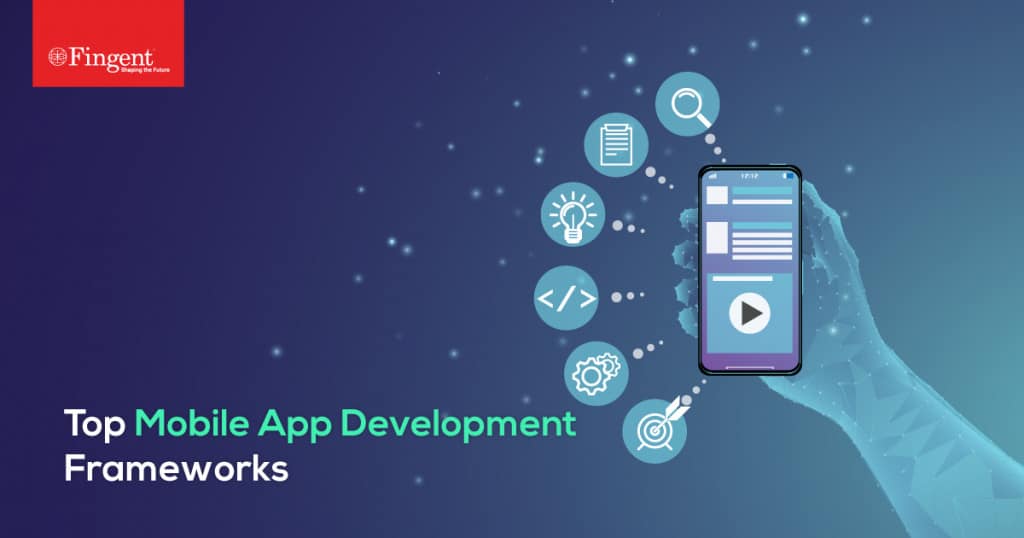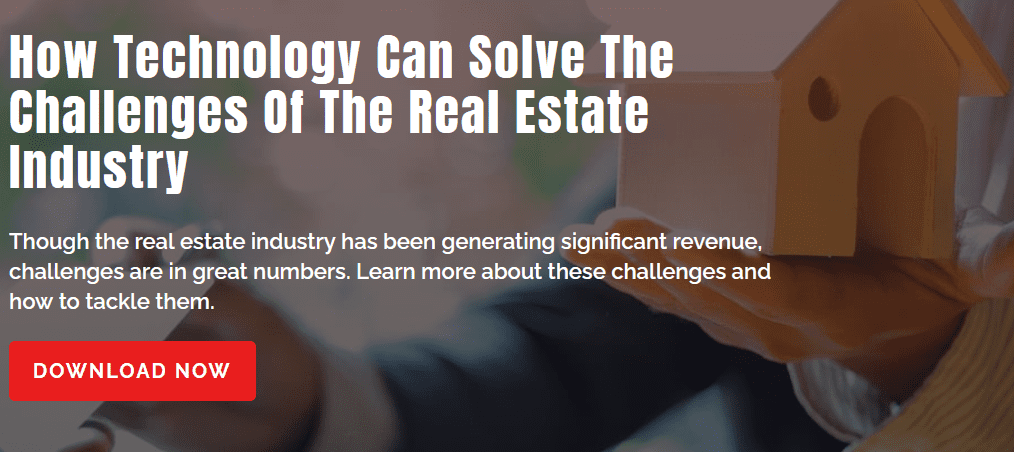Category: Digital Transformation
“The advance of technology is based on making it fit in so that you don’t really even notice it, so it’s part of everyday life.”
– Bill Gates, Co-founder of Microsoft.
When we look around us today it has become exceedingly obvious that the world is moving at a much faster pace than we remember. If not all, most of the credit goes to the vast number of technological developments that take place almost every day. In this rapidly changing world, we can either choose to evolve with it or stay back and live with the feeling that we are completely out of place and out of our depth.
This blog will help you understand all the “realities” of today’s tech world and help you fit right in and create a future workplace, to move ahead of your competition.
Reality In Its Many Forms
Some of the fastest developing and most exciting branches of technology out there are Virtual Reality and Augmented Reality. Although some companies have already integrated this technology into their business practices to create innovative and sustainable workplaces, it is imperative for every business to invest in AR and VR. If they want to succeed in this overly competitive world that is.
Recent studies conducted by PwC show that VR-trained employees were up to four times more focused than their e-learning peers and four times faster to train. When trainees are taught with a VR experience, they learn more from the training and have superior outcomes. Creating a workplace that is equipped with this kind of technology will most definitely increase the work productivity of the employees.
VR and AR have evolved over the past years and have become more convenient both technologically and financially for business and learning. They affect companies in every industry and various organizations, from universities to social enterprises. They have become the new terminal between humanity and machines, uniting the digital and physical worlds.
Read more: Top AR and VR Trends to Transform Ecommerce in 2022!

Now that we’ve established the necessity of VR and AR for businesses and industries, let’s move on to understanding what exactly these technologies are and what they do.
Virtual Reality
It is an artificial environment created by software and requires a special headset that plunges you into the new reality. It immerses the user within its virtual environment and in most cases, the user can manipulate objects or perform a series of actions.
Augmented Reality
AR, conversely, does not give an absolute immersion. It adds digital elements to a live view usually done by using the camera on a Smartphone or tablet.
Mixed Reality
Mixed Reality blends elements of AR and VR to co-exist creating a combination of virtual and actual realities, allowing you to interact with both simultaneously.
Extended Reality
XR is an umbrella term used when all these computer-generated technologies are used together.
Read more: Augmented Reality, Virtual Reality, Mixed Reality Detailed with Real-life Examples

How do these technologies influence the future of a workplace?
Listed below are a few ways that AR/VR/MR/XR is influencing the future workplace.
Virtual Reality –
- Increased Connection and Collaboration – As opposed to video consultation, VR users feel like they inhabit the same space, resulting in more effective collaboration.
- New HR Practices – With access to employees across the world, hiring practices will widen to recruit top talent.
- Upgraded Training Techniques – VR training is especially favorable in perilous situations, as it offers a safe, engaging, and educational experience.
- Efficient Product Development – VR finds its use in product testing in a variety of scenarios, abolishing the need for costly physical paradigms.
Augmented Reality –
- Will Save Money – AR headsets and apps can replace costly seminars or classes.
- Improve Productivity – Increased engagement through collaborations with other companies using AR will change the way employees work.
- Cognitive Barriers – With the help of AR your workforce can train much faster. This will in turn lead to a more structured, competent, and productive team.
Mixed Reality –
- Better business operations – MR can help companies work efficiently by allowing engineers to try new ideas without wasting resources and reducing complex processes.
- Enhanced training – It can offer experiential training sessions which allow team members to experience a situation for themselves, in a simulated environment.
- Improved creativity – It improves project development by allowing teams to make important decisions and alter features without wastage or excessive resources.
Extended Reality –
- Investment Banking – By using XR for broadcast, a firm could reach and interact with many investors over multiple locations in a robust and dynamic way while reducing costs, logistical challenges, and the need for travel.
- Trading Floor – XR replicates all the benefits of a modern trading floor along with advanced capabilities, plus the ability to access the trading environment from anywhere in the world
- Training and Compliance – Scenario models powered by XR, could be used to provide real-time training and ensure employees are well-equipped for real-world situations.
Read more:5 Real-world Applications of Extended Reality

Identifying Which Ecosystem Best Suits VR/AR/MR/XR
To determine which of these technologies better suit your ecosystem, evaluate the challenges your workplace is experiencing.
VR and AR thrive in fields of research and development, design, review, education, and training. MR’s combination of the physical world and the digital world is making notable changes in various industries, including medical, education and research, manufacturing, design, and construction. XR being the comprehensive umbrella that it is plays a more prominent role in various sectors and organizations, yielding clear benefits in numerous facets of work and business, including training, collaborative working, and marketing.
Irrespective of the technology you decide to go with, remember that every time new technology is implemented there’s a clear culture shift at the workplace, so be prepared for change.
How To Affordably Deploy AR/VR/MR/XR With Fingent
Fingent has developed strategic software solutions for businesses across the world. By initiating your projects with Fingent you are backed up by a dedicated and skilled team who work round the clock. All our processes are customer-oriented and designed to reduce the cost of business developments. Cutting-edge cloud to manage your storage, servers, and user access from one place. Set up everything fast with zero coding.
Fingent merges Augmented Reality using 3D modeling, 360-degree imaging, real-time character identification, and orientation-based tracking with our reality to form immersive and personalized solutions. We help you utilize ARCore; Google’s AR platform, to fabricate a potent user experience through Android devices and ARKit for IOS devices.
With 3D models and simple user-friendly interactions, Fingent creates a customized Virtual Reality strategy that closely binds with your business structure and objectives. We help you analyze and grasp the growing abilities of Mixed Reality to reach your customer base in the most ingenious ways and since Extended Reality is becoming the new mode of communication between business and client, Fingent has systems in place to increase awareness, engagement, and conversation and help support large-scale communication.
If you’re looking for easy and affordable ways to make your workplace future-ready, this is your shot Fingent has got you covered. Give us a call.
Streamline your business IT with InfinCE
![]()
Stay up to date on what's new

Featured Blogs
Stay up to date on
what's new



Talk To Our Experts
Digital transformation has become indispensable, more so now than ever before. When COVID-19 struck, governments swung into action and issued orders that restricted in-person business operations and encouraged people to work from home. In response, businesses began to look for ways to continue their operations by turning to various technologies.
Even before the spread of the pandemic, these technologies empowered businesses to engage with their customers, allowing workplace flexibility while introducing automation and faster processes. But the pandemic accelerated these adoptions immensely.
The digital transformation helped businesses to find ways for people to communicate, collaborate, and complete work while working remotely. At the same time, it catered to the request of customers who preferred contactless or contact-limited operations as well.
Exploring and understanding the latest digital transformation trends and what parts of these transformations will likely be here to last will help you plan the best digital transformation strategy.
Read more: Prepare for the future of Digital Innovation with these 10 services from Fingent!

What Is Trending In Digital Transformation Now (2022) And What’s Going Cold?
If there is one takeaway all businesses can learn from this pandemic, it is to be adaptable. As the landscape reinvents itself and workplace culture trends shift suddenly, systems, processes, internal dynamics must pivot to stay competitive.
It is crucial to adopt digital trends with the staying power to benefit your business. This makes it important to know all about the trend that will stay long-term versus ones that will go cold in this post-COVID ecosystem. Let’s begin with what goes cold.
1. Fading: Blockchain implementation
Blockchain implementation is designed to maintain distributed ledgers. However, the cost associated with it is higher compared to other technologies that can be applied more affordably. The higher pricing has diminished the interest in blockchain implementation.
2. Fading: Office technologies
Much of everyday business operations hinge on office technologies. Work from home mandates has changed this outdated means of communication and collaboration. Mobile phones have replaced pagers and online documentation has replaced paper.
3. Fading: Complicated and inadequate technology stacks
Whether your team is remote, hybrid, or office-based, it is crucial to have the right tech stack. A 2021 Work Report finding shows that 32% of workers quit a job because of inadequate technology and there is the other 49% who are likely to quit if the tech stack is hard to use.
Employees do not want to waste large amounts of time searching for information across various platforms. This can also result in security breaches too as it puts sensitive data at risk. Opting for streamlined technology over-complicated technology can lead to maximum efficacy.
4. Trending: 5G will go mainstream
Businesses need reliable connectivity and more bandwidth to achieve greater success at their core parts such as remote work and videoconferencing. Increased reliance on phones, tablets, and other IoT devices highlights the need for the multi-lane superhighway and so 5G deployments have become a vital part of the solution.
Read more: Future proof your business with 5G, Edge Computing, and Cloud!

5. Trending: Customer Data Platforms
There has been an explosion of Customer Data Platform (CDP) last year. It is highly difficult to organize fragmented data from multiple sources. Organizing such data is also a costly affair. To address this challenge, most companies now rely on CDPs to help them collect, organize, tag, and make it usable for all those who need access to it.
Data will continue to grow exponentially in the coming years which makes the rise of customer data platforms inevitable.
6. Consolidation of software vendors
Worldwide merger and acquisition activity combined with developing technologies has resulted in a consolidation of software vendors. According to a report by Gartner, consolidation in the tech business is set to hit a record high in 2022.
7. Digital transformation tools
Remote and hybrid work is becoming the rule, not an exception. With this scenario, organizations need technologies that seamlessly enable collaboration. Digital transformation tools will help businesses to manage employees and stakeholders that are globally dispersed. And this trend will become increasingly prominent in 2022.
8. Increased focus on the power of AI and hyper-automation
The gigantic amounts of data that businesses gather are only as effective as their AI systems. So, the implementation of AI will remain crucial for efficient business function in 2022. There is no need to approach AI with fear as AI will repurpose human assets as opposed to taking jobs away.
The key purpose of Artificial Intelligence is to automate. Essentially, this means all mundane and repetitive tasks can be automated resulting in huge benefits for many employees. Besides, it allows the employer to use that talent for more purposeful tasks.
9. AI for enhanced customer experience
According to Gartner, businesses that use AI in their customer service channels will experience a 25% increase in operational efficiency. The insights on customer behavior are causing IT system redesigns.
10. Technology to support distributed enterprises
The workforce is now becoming more geographically dispersed. Frictionless work experienced necessitates major technical and service changes. Every organization must reconfigure to embrace distributed services. The right digital technology is imperative for business success.
11. Supply chain digitization
Increased consumer prices and the sluggish economy are exerting tremendous pressure on supply chains. Supply chain digitization is a crucial component that will aid in solving supply chain issues.
Read more: A Look Into The Future Of Manufacturing Industry – The challenges, the opportunities, and the technologies that will help revolutionize!

12. Fourth industrial revolution (Industry 4.0)
Industry 4.0 includes new integrated technology that aims to mitigate the inefficiencies of traditional manufacturing. The manufacturing industries are moving towards robotics, AI, and ML to increase efficiency and benefit their customers.
13. Renewed focus on Human Capital Management (HCM) software
The practice of HCM has become increasingly prevalent in 2021. It has become the driving force for most business practices and will continue to center stage in 2022.
Planning The Best Digital Transformation Strategy With Fingent
The acceleration of digital transformation may seem overwhelming. But the right technology can enable a seamless transition for your business. Fingent can help collaborate and streamline the process of selecting solutions that drive digital transformation.
Fingent will assist you in evaluating the available options in the market and in making the best choice on the solutions you need.
We can help in reducing the cost of your tech evaluations, increase process effectiveness and employee satisfaction. So, the only tool you need to digitally transformation of your business is Fingent! Connect with us today!
Stay up to date on what's new

Featured Blogs
Stay up to date on
what's new



Talk To Our Experts
Everyone uses software products. From toddlers to grandparents, in one way or the other, almost everyone has used a software product. The number of mobile devices operating worldwide stood at almost 15 million in 2021! Today, software development permeates the entire world. You are reading this blog on a device whose lifeblood is software. It is no surprise that businesses invest in software development. But what is the cost? That is probably the single most important question to businesses intent on making wise business decisions. This article discusses everything that may affect the cost of app development in 2022 to help you estimate the cost of your app development.
Is App Development Necessary for Your Business?
Adding to the Statista report that put the 15 million number on the number of mobile devices, did you know that the number of mobile app downloads surpassed 200 billion in 2019? And there is no slowing down.
Along with mobile devices, there are other devices like tabs, laptops, and desktops. And we know that all of these function by the operating system. The operating system is a piece of software with lots of integrated functions known as software.
Individuals and businesses across the world depend heavily on software and enjoy many benefits. In this digital age, the software is essential to run different operations in transportation, electrical grids, and many other functions that offer the basics of life.
To the question “Is App Development Important?”, the answer is a resounding YES. Now to the costs involved.
App Development Cost Estimates For 2022
It is important to remember that app development cost depends on various factors. Mobile app development costs will be different than web app costs. The cost could also depend on the complexity of the app.
A small app with core features can be developed at lower rates. However, a complex app with intricate features will be expensive. Building a minimum viable product may cost less than $10,000. On the other hand, if you want an app that is compatible with both android and iOS platforms you will need a bigger budget.
App development cost also depend on whether you develop the app in-house or outsource it. Before you choose to develop it in-house you must ask yourself if your team has the necessary experience to take an app from design to delivery.
If you do not have the expertise on your team, it may ultimately end up costing you more in terms of lost work and demoralized teams. Otherwise, the best option is to seek out an external partner who can develop an app for you.
Read more: Top Technologies Used to Develop Mobile App

Keeping all this in mind, is there a formula to calculate app development costs?
Top Factors That Drive App Development Costs
1. Based on the complexity of the app
A simple app might take hundreds of hours while a complex app might take thousands. These hours also depend on how efficient the developing team is.
A simple app includes basic features like a login screen, user account, admin tools, and so on. It may have limited integration with other apps. Thus, it may take about 3 to 6 months to develop.
Along with all the features of a simple app, a complex app includes features such as integrations, profile feeds, enhanced admin tools, media streaming, and more. Such an app would take 6 to 12 months.
The most complex of all is an advanced app. This includes multi-language support, versioning, lots of user customization options, AI and AR, and more. This could take somewhere between 12 to 24 months.
2. Based on region
You will find potential developers around the world, over various time zones such as the US, India, and Europe. Each of these areas has expert developers but their rates vary depending on their location.
3. Based on development stages
The budget of the project starts to become clearer during the research stage. In this stage, you will be able to clarify your requirements and finalize goals and deliverables. You will also be able to assess risks and threats.
The next stage would be designed where the development team needs a clearer idea of what the app should look like. This stage will take longer and will be more expensive depending on the complexity of the user interface and so on.
During the development stage, each feature will add to the cost. The next stage of testing may require human users to ensure the correct functionality, and this will add to the cost. The final stage is maintenance and support. Bugs and unexpected behavior will need to be addressed; hence, it is important to budget in the final phase.
Watch now: How To Choose The Right Mobile App Development Approach
Top Ways In Which One Can Initiate Cost-Effective App Development
Are you wondering how you can get the app that you wanted in your limited budget? Here are a few tips that help you initiate a cost-effect app development.
1. Use software development kits wherever you can: Software development kits could trim weeks or months off your development schedule. Thus, reducing thousands off your development budget.
2. Find a vendor that can design and develop: Finding a vendor that does both designing and development can help you deal with communication problems and optimize workflow.
3. Get the MVP made: Getting the MVP made and testing on your users will help you identify what needs to be added. Eventually, your full-featured app will be ready. Besides, you will also learn how to optimize your budget.
4. Cross-platform development: Opting for cross-platform development can heighten your potential to reach a wider audience.
5. Do not rely on older operating systems: Just a couple of years older can make a huge difference. It is worth the effort to focus on consumers who keep up to date.
How Can Fingent Help Develop Top-Notch Apps On A Budget?
We at Fingent understand considering how much it costs to develop an app can be an overwhelming experience. How about a consultation with our expert to get a quote?
We assure you that we have the specialized skill and experience to build a successful and budget-friendly app. Don’t take our word for it. Have a look at some of our case studies.
As your technology partner, Fingent can bring your brilliant ideas into digital reality!
We have helped many businesses grow their business with our innovative, modern mobile app solutions. Take a look at our most success stories here!
We can help you too. Connect with our experts today!
Stay up to date on what's new

Featured Blogs
Stay up to date on
what's new



Talk To Our Experts
Everyone uses software products. From toddlers to grandparents, in one way or the other, almost everyone has used a software product. The number of mobile devices operating worldwide stood at almost 15 million in 2021! Today, custom software development permeates the entire world. You are reading this blog on a device whose lifeblood is software. It is no surprise that businesses invest in custom software development. But what is the cost? That is probably the single most important question to businesses intent on making wise business decisions. This article discusses everything that may affect the cost of custom software development in 2022 to help you estimate the cost of your custom app development.
Is Custom Software Development Necessary for Your Business?
Adding to the Statista report that put the 15 million number on the number of mobile devices, did you know that the number of mobile app downloads surpassed 200 billion in 2019? And there is no slowing down.
Along with mobile devices, there are other devices like tabs, laptops, and desktops. And we know that all of these function by the operating system. The operating system is a piece of software with lots of integrated functions known as software.
Individuals and businesses across the world depend heavily on software and enjoy many benefits. In this digital age, customized software is essential to run different operations in transportation, electrical grids, and many other functions that offer the basics of life.
To the question “Is Custom Software Development Important?”, the answer is a resounding YES!
Now to the costs involved!
Custom Software Development Cost Estimates For 2022
It is important to remember that app development cost depends on various factors. Mobile app development costs will be different than web app costs. The cost could also depend on the complexity of the app.
A small app with core features can be developed at lower rates. However, a complex app with intricate features will be expensive. Building a minimum viable product may cost less than $10,000. On the other hand, if you want a customized app that is compatible with both android and iOS platforms you will need a bigger budget.
Custom app development costs also depend on whether you develop the app in-house or outsource it. Before you choose to develop it in-house you must ask yourself if your team has the necessary experience to take an app from design to delivery.
If you do not have the expertise on your team, it may ultimately end up costing you more in terms of lost work and demoralized teams. Otherwise, the best option is to seek out an external partner who can develop an app for you.
Read more: Top Technologies Used to Develop Mobile App

Keeping all this in mind, is there a formula to calculate custom app development costs?
Top Factors That Drive Custom Software Development Costs
1. Based on the complexity of the app
A simple app might take hundreds of hours while a complex app might take thousands. These hours also depend on how efficient the developing team is.
A simple app includes basic features like a login screen, user account, admin tools, and so on. It may have limited integration with other apps. Thus, it may take about 3 to 6 months to develop.
Along with all the features of a simple app, a complex app includes features such as integrations, profile feeds, enhanced admin tools, media streaming, and more. Such an app would take 6 to 12 months.
The most complex of all is an advanced app. This includes multi-language support, versioning, lots of user customization options, AI and AR, and more. This could take somewhere between 12 to 24 months.
2. Based on region
You will find potential developers around the world, over various time zones such as the US, India, and Europe. Each of these areas has expert developers but their rates vary depending on their location.
3. Based on development stages
The budget of the project starts to become clearer during the research stage. In this stage, you will be able to clarify your requirements and finalize goals and deliverables. You will also be able to assess risks and threats.
The next stage would be designed where the development team needs a clearer idea of what the app should look like. This stage will take longer and will be more expensive depending on the complexity of the user interface and so on.
During the development stage, each feature will add to the cost. The next stage of testing may require human users to ensure the correct functionality, and this will add to the cost. The final stage is maintenance and support. Bugs and unexpected behavior will need to be addressed; hence, it is important to budget in the final phase.
Watch now: How To Choose The Right Mobile App Development Approach
Top Ways In Which One Can Initiate Cost-Effective Custom Software Development
Are you wondering how you can get the app that you wanted in your limited budget? Here are a few tips that help you initiate a cost-effect app development.
1. Use software development kits wherever you can: Software development kits could trim weeks or months off your development schedule. Thus, reducing thousands off your development budget.
2. Find a vendor that can design and develop: Finding a vendor that does both designing and development can help you deal with communication problems and optimize workflow.
3. Get the MVP made: Getting the MVP made and testing on your users will help you identify what needs to be added. Eventually, your full-featured app will be ready. Besides, you will also learn how to optimize your budget.
4. Cross-platform development: Opting for cross-platform development can heighten your potential to reach a wider audience.
5. Do not rely on older operating systems: Just a couple of years older can make a huge difference. It is worth the effort to focus on consumers who keep up to date.
How Can Fingent Help Develop Top-Notch Custom Apps On A Budget?
We at Fingent understand considering how much it costs to develop an app can be an overwhelming experience. How about a consultation with our expert to get a quote?
We assure you that we have the specialized skill and experience to build a successful and budget-friendly app. Don’t take our word for it. Have a look at some of our case studies.
As your technology partner, Fingent can bring your brilliant ideas into digital reality!
We have helped many businesses grow their business with our innovative, modern mobile app solutions. Take a look at our most success stories here!
We can help you too. Connect with our experts today!
Stay up to date on what's new

Featured Blogs
Stay up to date on
what's new



Talk To Our Experts
One of the oldest known professions and also considered one of the most dangerous, Mining is now nothing like it used to be. The face of the mining industry has changed drastically. We no longer rely on physical hand and animal labor. Artificial Intelligence has stepped in. There is a lot going on.
Modern mines are sophisticated and machine-intensive environments. Whether we are extracting minerals and ores or gas, we need machines to extract, transport, refine, and move them to their destinations. AI is enabling the mining industry to be a safer and more profitable industry.
How AI Is Transforming The Mining Industry
Artificial Intelligence (AI) is driving innovation in the mining industry by transforming the way mines operate today. The mining industry is constantly looking out for ways to improve safety, productivity, and sustainability.
AI helps achieve these key factors by collecting data and using relevant information to optimize processes and improve equipment development. AI proves particularly useful when it comes to cumbersome and operations-heavy processes.
The use of AI can make operations and machinery even more sustainable in the long run.
Watch now: 5 Steps to Prepare Your Organization for an AI-enabled Future!
Benefits Of AI In Mining
Mining companies must become more efficient and innovative. This will help them keep their workers safe, mitigate their environmental footprint and remain competitive. AI plays a vital role in this. Here are some advantages of AI integration in the mining industry:
1. Improve resource discovery and planning
The initial investment in mining can be very costly. The company must know precisely where and how to dig. A wrong location can cost millions of dollars. AI can help learn about the terrain they are working with and precisely map out and predict terrain better than any humans can do, effectively preventing those errors.
Artificial Intelligence can analyze vast amounts of data to find better resources. Better predictions will contribute to better planning and a better return on investment.
2. Cost optimization
Cost optimization is the primary motivation for mining companies to use AI. AI can analyze big data to help diggers conduct their operations more cost-effectively. It can also help them develop efficiency along these lines.
Mining companies can use the data collected to teach their machinery and prevent damage. AI can help automate different operational processes. It can also enable remotization that can substantially reduce labor, increase productivity and safety of workers. This can greatly reduce costs and increase productivity gains.
3. Preventive maintenance
Reactive maintenance can cost six to ten times more than predictive maintenance. On the other hand, predictive maintenance eliminates the risk of production halts ensuring operational continuity.
Furthermore, preventive maintenance makes it easier to maintain security protocol. It helps in the early detection of wear and tear of important pieces of equipment. This can help workers to predict and plan repairs and maintenance.
4. Reduces environmental footprint
Mining by nature has a negative environmental impact. While it is not possible to completely eliminate the impact of mining, AI-monitored devices are capable of instantly analyzing and interpreting enormous amounts of sensor data. These systems can help you locate patterns that may be of concern.
AI can provide greater value and reliability to the industry while increasing safety and reducing negative environmental impact. It can optimize dust control measures for haul roads by helping workers to apply the right doses of dust control additives at the right time in the right way.
This will also reduce associated water, additives, energy, and other factors by 50%. This is in addition to preventing road maintenance frequency, avoiding accidents, and loss of productivity.
5. Enhanced decision-making process
In the mining industry every second counts. When there is a breakdown, administrators cannot afford to lose time waiting for an engineer to arrive. Thankfully, AI enables administrators to obtain valuable insight in real-time and automate part of the decision-making process. These insights allow them to respond promptly and appropriately.
Why Do Mining Companies Still Hesitate To Adopt AI?
There is no doubt that AI holds immense promise for the future of the mining industry. However, some mining companies still hesitate in adopting AI. As with the adoption of any technology, if not implemented properly, AI adoption can be difficult, time-consuming, and costlier than anticipated. Here are some AI adoption challenges and solutions:
Resources: Every business is concerned with budget and return on investment (ROI). As legacy technology does not support AI, companies need to invest in compatible infrastructure that is agile, flexible, and scalable. Opting for cloud-based services can negate the huge costs of investing in newer servers and processors. Plus, it is a good idea to start small and scale up. It is also important to avoid unnecessary AI tools.
Industry culture: Leadership and culture that promotes experimentation and strategies will result in a more dynamic and scalable environment.
Lack of talent: AI technology is complex. Companies must thus look for people with the right mindset to help facilitate changes and capitalize on opportunities.
Governance: Only when leaders understand how AI fits into their business model can they encourage AI adoption.
Read more: Answering The Top Burning Questions On AI Implementation for Businesses!

How Can Fingent Help Resolve These Challenges And Transit To AI Capabilities At Ease?
Fingent has been at the forefront of leveraging the power of AI to empower leaders with the benefits of root-cause analysis and predictive insights. Our AI is built with the core philosophy of congruence between humans and machine capabilities.
Fingent can help deploy user-centric designs to enhance operational and machine reliability. We consider technology as an ally to enhance human intelligence and capabilities. Hence, our AI models can help solve many challenges that the mining industry faces.
Our AI solutions enable businesses to analyze voluminous, real-time data. Additionally, these solutions can also diagnose bottlenecks with the help of real-time monitoring and AI-powered predictive insights.
Fingent’s AI solutions can increase your productivity, reduce industrial waste, and enhance machine reliability. We can also help minimize the ecological impact of the mining industry while ensuring the safety of mineworkers.
We know that in the mining industry, each rock crushed is money saved or lost. We at Fingent understand that the mining industry needs to open up to modern operational practices that promote efficiency. Our AI solutions are powerful enablers to help your get there. Let’s discuss how we can assist you.
Stay up to date on what's new

Featured Blogs
Stay up to date on
what's new



Talk To Our Experts
As the world deals with the short and long-term effects of Coronavirus, the manufacturing industry has suffered significant challenges during 2021. This knock-on effect is likely to be felt into 2022 as consumer demand and spending habits have transformed during the pandemic.
The pandemic demonstrated that major events can have a profound impact on manufacturing operations. Fluctuations between local and national lockdowns have directly impacted the manufacturing industry. Among various other things, it has led to delaying tax bills, postponed mortgage payments.
Knowing what challenges await manufacturing industries will help you and your team come up with the best strategy to achieve success in 2022. So, this article will cover some of the biggest challenges manufacturing industries will face in 2022. We will also look into how these industries can approach the challenges with the help of technologies.
Top challenges prevailing in the manufacturing industry-2022
1. Need to increase sales and revenue
The pandemic made businesses lose several thousands of dollars pushing manufacturing industries to put extra effort into recouping financial losses. Some companies chose to double up on their marketing efforts.
However, the right step would be to create a strategy to start building the business’s pricing power. Building a price power is the surest way to enjoy sustainable earnings.
2. Labor retention
The pandemic era has made it challenging to tackle labor retention issues among the workforce. As the pandemic continues, it is become increasingly hard to find experienced and motivated workers.
To complicate matters, with a fair portion of workers are nearing retirement manufacturing industries are facing a looming shortage of skilled labor. The newer technologies require a workforce with top-tech skills.
3. Customer self-service capabilities
Manufacturers are ever concerned about delivering their products to customers on time. Though the technology makes it possible for customer self-service capabilities, it is not commonly used.
Customers find it frustrating to constantly contact manufacturers for updates on their orders, requests for new proposals, and so on. Customers prefer immediate access to information.
You can address this issue by simply keeping the needed data for customers in a self-service portal. This will allow your customers to retrieve a solution. Plus it can enable the sub-contractor to track and accept tasks assigned to him without bothering anyone.
4. Maximizing work with minimum staff
The social distancing protocol due to the pandemic has forced manufacturing companies to run the factories with lesser staff. This is the time to explore the implementation of more automation technologies.
Read more: Top 10 Technologies That Will Transform Manufacturing!

Most-followed technologies that enable manufacturers to stay on top of the challenges
As Industry 4.0 is still in progress, most manufacturing industries are shifting gears in an effort to automate their manual processes. And the challenges are accelerating this shift now more than ever. Take a look at the top opportunities new technologies bring to the manufacturing industry.
1. Machine Learning and Artificial Intelligence capabilities
The biggest asset of any company is its data. It is vital to use algorithms to use this enormous amount of data effectively. Humans cannot do this task as efficiently, quickly, and accurately as by AI-led technologies. This ensures your manufacturing is more productive and less wasteful.
According to a global survey conducted by McKinsey & Company, 44% of respondents report cost saving from AI adoption.
2. 3D printing
Manufacturing companies can greatly benefit from 3D printing technology as it can enable manufacturers to make faster and cheaper prototypes.
It can double the performance while lowering the cost by half. It is a cost-effective way to troubleshoot or test the products. It also enables manufacturers to produce products that are in high demand.
3. Smart factories with 5G
The fourth industrial revolution is ushering in an era of smart manufacturing that is enabled with connected devices over 5G networking.
These can make decentralized decisions as the 5G mobile network is faster and more powerful. It is capable of handling full integration of all the devices in a smart factory making it a default choice of manufacturers.
4. Internet of Things
Industrial IoT makes it possible to interconnect sensors and electronic devices that collect and exchange data. It drives AI and performs predictive analytics. IoT is changing the way products are made and delivered.
A study conducted by MPI Group revealed that roughly 63% of manufacturers believe that applying the IoT to products will increase profitability over the next five years.
5. Predictive maintenance
The manufacturing industry depends heavily on predictive maintenance technology. In the past, routine maintenance checks were scheduled to detect unnoticed malfunctions. But that would halt the production and cost money.
Today’s digital technology has enabled machines to send messages to notify workers if or when maintenance is required. These real-time alerts equip the maintenance team to identify and correct mechanical failures without downtime.
6. Shift in the scope of the job
As technology takes over repetitive tasks, employees will need new skills. These skills would include data analysis, software engineering, programming, customer service. R&D and product development, and so on.
7. Agility and responsiveness
Changing customer demands and market conditions require manufacturers to focus on improving responsiveness and agility. Responsiveness and agility are achieved when the time to create, receive, schedule, and process a customers’ order is reduced.
This will enable manufactures to match production cycles and product demand levels. Matching these two aspects can help manufactures pump their operations with greater agility.
Read more: ERP Systems for Manufacturing: How it Improves Business Process!

Fingent can help revolutionize your manufacturing company
Identifying improvement opportunities can help your manufacturing industry enjoy significant benefits. Fingent can help you improve your business process and facilitate growth toward building an incredibly smart manufacturing plant.
Fingent is an efficient web and mobile app development company with vast experience in crafting remarkable digital success stories for diverse manufacturing companies across continents.
We will help you to stay abreast with what may affect your business and provide you with potential solutions available. To help plan for 2022 contact Fingent!
Stay up to date on what's new

Featured Blogs
Stay up to date on
what's new



Talk To Our Experts
Building a successful business is a marathon. But determination and a business growth mindset can make it happen. If you are a business owner looking for a consistent approach to growing your business, you must realize that the essence of your company is the ability to establish trust with your customers.
True, building customer trust and loyalty takes time, effort, and persistence. But when you build trust, you are turning the key to rich dividends as your customer evangelists gear up to advocate your business. In turn, it increases brand visibility, attracts more consumers, and increases revenue.
In this article, you will learn the importance of building customer trust and loyalty in the growth of your business. You will also learn how emerging technologies can help boost customer trust in 2022.
Why Building Customer Trust And Loyalty Will Matter The Most Going Ahead?
As the world battles to contain the current pandemic crisis, customer trust and loyalty are being put to the test. However, it is good to remember that this is just one of the many crises we will face in the future. Now is the time to let your customers know how important they are to you.
Customer trust and loyalty are not just important where competition is fierce. It is a brand differentiator that could make or break a business. In a way, customer trust is an “insurance policy” against any future upheavals. It can ensure your survival if you face problems in the future. It will also ensure that your business thrives when others struggle to find a foothold.
Customer trust and loyalty are also important because they are constantly bombarded with various options. And for obvious reasons, this will only increase in the future. The need to build customer trust and loyalty has heightened, thanks to the immediate effect of emerging technologies.
How Can Emerging Technologies Help Boost Customer Trust?
Technologies are continually evolving and will always impact customer trust and loyalty. The speed of this change is faster than ever now. With emerging technologies, companies must prepare by identifying those trends now and capitalizing on them before it is too late.
The influence of technology can be a powerful catalyst to build customer trust and loyalty. Businesses that do not choose to move with emerging technologies will be left behind and may have to face business disruption.
Today, customers are becoming more tech-smart. To boost customer loyalty and trust, businesses must stay up-to-date with emerging technologies. Here is how you can boost customer trust:
- Technologies can help you keep your lines of communication open, fostering relationships
- Converse where and when you need
- Create a high level of personalization to promote brand loyalty
- Create an experience both online and in real-time
Read more: Customer Retail Software Solution: Everything you need to know!
Technologies That Help Drive Customer Loyalty Through Unique Experiences
There are many opportunities to engage your customers and build their trust and loyalty. But that is only possible if your business is equipped with the right tools to capitalize on it. Consider some:
1. Chatbots
The influence of technology offers companies solutions to meet higher expectations. AI-powered chatbots enable businesses to better communicate with their customers. It helps you to be there with relevant messaging and information whenever the customers choose to reach out.
This has a significant impact on customer trust. It is noted that customers are increasingly willing to buy a product through chatbots.
Additionally, chatbots provide detailed records of conversations with your customers. This provides you with data that can be analyzed to gain insights on customer pain points. This data can also be used to improve your products and services.
2. Voice capabilities
Voice capabilities can be relied on to engage customer loyalty and facilitate actions. These capabilities can serve as a useful tool to the customer as it leverages data to make customers’ task simpler and more seamless.
Voice-enabled technology enables your company to do all these more efficiently. Besides, it appeals to busy customers as it indulges them in a quick shopping experience. This builds customer trust and loyalty and encourages repeat business.
3. Virtual and Augmented Reality
Virtual and Augmented Reality (AR and VR) technologies are game-changers in the way businesses communicate and interact with their customers. They enable customers to educate themselves and solve their issues better than ever before.
Additionally, these technologies will provide your sales reps better understanding of what the customer is going through. Thus, it increases their empathy and enables them to come up with better solutions for your customers’ issues.
Virtual and Augmented Reality are enabling the visual journey of the customer allowing them to search by looking at an object. This can open to new experiences. The resulting data can be used for innovative engagement in the future.
Read more: 7 Ways Augmented Reality will Transform Experiential Marketing!
4. Customer Relationship Management (CRM)
CRM (Customer Relationship Management) is a tool for tracking and managing a customers’ journey. It makes communication between marketing teams more efficient.
A CRM tool allows retailers to analyze huge amounts of customer information including the feelings that drive customer behavior. This enables your company to establish a deeper connection with your customers. Using this technology will help you craft more highly personalized messaging and new features to your services and products.
5. Virtual showrooms
Many shoppers still prefer the in-store experience. Virtual reality allows customers to see a 3D rendering of a kitchen or other renovations. It also allows customers to pick and choose the items they would like in their virtual room.
This technology can also be useful in purchasing clothing from the comfort of their homes as it allows them to mix and match.
6. Artificial Intelligence
Artificial Intelligence (AI) can help your business stay a cut above the rest. It is a great tool to build customer loyalty and trust.
AI can provide you with needed information to understand the purchase behavior and interaction patterns of your customers. This information can be leveraged to design products that suit your customers.
Natural Language Processing (NLP), computer vision, and deep learning can be used to analyze a vast database of visuals and text. You can use this information to identify the main themes in colors, patterns, styles, and so on of your products. These findings can be implemented while designing future products.
Gear Up for Exciting Opportunities
Emerging technologies uncover exciting opportunities for businesses and are poised to increase economic growth by building customer loyalty and trust. Are you in on it? Give us a call and let’s get talking.
Stay up to date on what's new

Featured Blogs
Stay up to date on
what's new



Talk To Our Experts
Software as a service (SaaS) is a fast-growing IT segment that commands the highest adoption rate among public cloud services, such as PaaS, IaaS, BPaaS, and others. In 2020, the worldwide end-user spending on Cloud Application Services (SaaS) accounted for USD 102,798, which shot up to a massive USD 122,633 at the end of 2021. Gartner examines that the adoption of scalable, on-demand cloud models enabled businesses to achieve cost efficiency and business continuity in a pandemic-afflicted economy. The rise in the adoption of public cloud services is giving an impetus for organizations to accelerate their digital transformation plans.
Understanding more about SaaS app development is significant because it:
- Helps optimize IT costs and conserve cash,
- Aids and secures remote work, and
- Ensures business resiliency.
Watch video: Advantages of moving your key workloads to cloud
SaaS solutions are inevitable in building and sustaining a collaborative, agile, mobile, and hybrid work environment. This post sums up the nitty-gritty you need to know about SaaS application development.
What is SaaS application development?
Ever since the launch of the internet, Application Service Providers (ASPs) that deliver software to users over the internet on a subscription basis have been popular. ASPs allowed users to subscribe to the applications and associated functionalities by following a usage-based transaction pricing model. While it was a major breakthrough, ASPs weren’t fully successful in reducing IT costs and simplifying deployments and upgrades. Thanks to cloud computing; the rise of SaaS applications has lowered the development time, cost, and effort for enterprises. Businesses of all sizes are now expanding their investments in SaaS development.
Software as a service (SaaS) is a software licensing and distribution model in which the application is centrally hosted on the cloud and is maintained and updated by the SaaS developer. Along with Infrastructure as a service (IaaS) and Platform as a service (PaaS), SaaS is one of the key cloud computing models that’s widely marketed to both business (B2B) and individual (B2C) users. Netflix, Office 365 suite, Google Workspace, Cisco WebEx, etc. are the common SaaS products that we use every day.
Read more: Top business drivers that power legacy cloud migration
Why are businesses investing in SaaS app development?
SaaS was an extremely profitable business segment in 2020. According to a 2018-2023 forecast, companies running on SaaS will rise from 51% to 86% in a span of five years. SaaS-based solutions have enabled several business sectors, including virtual collaboration, e-commerce, FinTech, supply chain automation, and healthcare to thrive despite the large-scale disruptions inflicted by the global pandemic. Here are a few factors that make SaaS a hot choice in the investor’s market.
1. Manage costs
SaaS applications require minimal upfront investments. The Pay-as-you-go model allows you to start with a small capital and expand later when you anticipate better business growth and profitability. SaaS application deployment takes less time and money when compared to a traditional on-premise system setup. Most SaaS providers offer dedicated application maintenance and support which saves you from hiring and managing expensive in-house IT teams.
2. Reduce IT dependencies
Your SaaS application development services provider will take care of hardware maintenance, system failures, and downtimes, software updates, routine maintenance, and backups, etc. Based on your business requirements and the services subscribed to, the SaaS provider will help you customize the application, upgrade the software to its latest version, and offer training to your staff. This helps you focus on the core business activities.
3. Seamless integration with other systems
SaaS-based applications can be integrated easily with your legacy systems or any other third-party software that you use. By developing custom APIs and plugins, SaaS providers like Fingent will help integrate your CRM with ERP or HRM with Payroll software. The SaaS application can work as an extension of your current software, adding value to your daily operations. Cloud infrastructure and on-demand computing model empower you to scale up and meet the surging demands.
4. Mitigate security risks
SaaS software providers are responsible for securing the application, operating system, platform, network, and physical infrastructure. Along with these security options, the SaaS provider will help secure your customer data and user access by applying a few techniques such as Identity and Access Management (IAM), cloud data encryption, Data Loss Prevention Software (DLP), compliance solutions, real-time threat intelligence, behavioral analytics, Cloud Access Security Broker (CASB) solutions, etc.
Read more: Why is cloud security important? What are the best practices to ensure cloud security?
Points to consider before starting your SaaS app development project
There are a few technical and business factors to consider while developing a SaaS product.
Technical considerations in SaaS development
- Database design: Choose a flexible and secure database(s) based on the data type, scalability, anticipated load, budget, programming languages used, read-to-write actions involved, and other specific business purposes.
- Technology stack: Right technology stack helps build the right SaaS product. By partnering with a SaaS provider like Fingent, you can leverage the latest and the best tech stack to incorporate all the required features into your SaaS application.
- Third-party services integration: Businesses that use SaaS products may want to integrate their applications with third-party services such as payment providers, chat and email service providers, customer-answering bots, etc. Ensure that the chosen third-party services are budget-friendly, scalable with your growth plans, credible, and offer excellent community support.
- Regular patches and updates: Your SaaS application should be up-to-date and scalable to match your clients’ growing demands. Software updates must be scheduled, and new functionalities and changes to existing features (feature enhancements) should be tested thoroughly.
Non-technical considerations in SaaS development
- Conduct market research: Prior to starting your SaaS project, it’s important to analyze the market, understand what users are looking for, study competitors, and then visualize your SaaS solution. The market analysis leads to better project planning with realistic goals in mind.
- Make the software user-friendly: The end-user of your SaaS product is not necessarily a techie. The software should appeal to the audience for which it’s built. Market it to the right audience by applying a fair pricing and subscription policy. Devise marketing strategies to improve client adoption.
- Ensure software compliance: Security risk is a major barrier to SaaS adoption. Before publishing your SaaS software, ensure that it has robust data protection and sharing policies, user access policies, regular software maintenance, and 100% compliance with standards such as GDPR, HIPAA, etc.
- SaaS pricing model: SaaS software market offers a variety of pricing models such as usage-based pricing, per-feature pricing, flat-rate pricing, tiered pricing, and so on. Determining the right pricing model depends on factors such as how much your customers are willing to pay, how far your product is capable of solving their problems, and how your competitors are charging for a similar suite of products. Ensure that the pricing model doesn’t stagnate your product.
SaaS app development best practices
Here are a few best practices to ensure the performance, productivity, and acceptance of your SaaS application.
1. Focus on MVP creation as the first step
Many SaaS developers use MVP (Minimum Viable Product) as the initial step for building a successful SaaS application. An MVP is a fully functional and quickly developed miniature version of an application built to test the SaaS product’s viability. Developing an MVP will help you understand the feasibility of your business idea and the changes to be accommodated based on user feedback. It helps reduce your development cost and effort.
2. Multi-tenancy architecture
A SaaS application isn’t made for a single user. It should be flexible enough to serve thousands or even millions of customers. Multi-tenancy is crucial in cloud computing as it allows multiple tenants (users) with different roles and access privileges to be hosted in the same environment. Each user will have a separate and secured space within the server to store their data. Multi-tenant architecture improves your ROI and helps update and maintain your SaaS application.
3. Personalize your SaaS product
As remote and hybrid workspaces go mainstream, and BYOD becomes common, users seek personalized SaaS products that don’t require extensive admin support. Users demand high-level personalization with your SaaS app. For example, changing the UI’s appearance, integration of Single Sign On (SSO) feature, configuring the dashboard to track the metrics quickly, and so on. They may want the SaaS app to be available in both web and mobile and any other portable devices that they use. Make your SaaS app safe and compatible to address such personalization requirements.
4. Prioritize and optimize features
Adding too many features as well as avoiding important features are equally wrong. Consider the reach and impact of a feature addition, such as how many users will be affected or how many customers are looking for the new feature. Track the SaaS app’s usage patterns by leveraging analytics or run a survey to understand user preferences. If more than 50% of them like an existing feature, optimize it. If only 5% of your users are interested in a new feature, eschew it.
Read more: A comprehensive guide to modern cloud application development
How Fingent helps develop exceptional SaaS applications within your budget
With Fingent, you are just a few steps away from building and managing your own SaaS application development team. Right from developing an MVP to actual product launch and post-launch support, our team handholds customers through every stage of development.
InfinCE, the world’s first digital workplace orchestration platform, stands as a testament to our SaaS development capabilities. So are ReachOut Suite FSM and Skill Lake LMS. Our goal is to help businesses solve challenges through technology. We help legacy companies migrate their software solutions to the cloud as well as develop cutting-edge SaaS solutions that empower them to thrive in the new normal.
Read more: What makes Fingent your best technology partner
If you have an idea or a requirement, discuss it with us asap. We will set up a discovery call with you and get back with a ballpark estimate. This is followed by a detailed proposal, including mockups, demo videos, and visualizations. Our communication method is simple enough to answer your queries related to software app development. We do business with organizations of all sizes – small and large – to help them transform lives through technology. Ready to watch us in action? Talk to our SaaS expert now.
Stay up to date on what's new

Featured Blogs
Stay up to date on
what's new



Talk To Our Experts
- Introduction
- A Brief History Of Metaverse
- A Simple Definition Of Metaverse
- Metaverse And The Future Of Work
- Metaverse Applications In Our Work World
- Potential Concerns Around Metaverse
- Metaverse: What Lies Ahead?
Introduction
Metaverse is the next generation of the internet. Blending the elements of virtual reality, augmented reality, online games, social media, and cryptocurrencies; metaverse ushers in a novel phase of interconnected virtual experience, that reimagines the future of work. This blog will take you through everything you need to know about Metaverse – from history to how it will impact the future of work!
A Brief History Of Metaverse
In his 1992 sci-fi novel Snow Crash, author Neal Stephenson coined the phrase metaverse – probably the first time most of us heard it. The novel portrayed metaverse as a successor to the internet, depicting the author’s vision of how a virtual reality-based Internet might evolve in the immediate future.
Today, the metaverse is moving from hypothetical to real, inspiring enterprise tycoons to rebrand and innovate. The recent rebranding of Facebook, Inc. into Meta Platforms, Inc. was solely inspired by metaverse. In the Founder’s Letter, Mark Zuckerberg underscores that “We are at the beginning of the next chapter for the internet. The next platform will be even more immersive — an embodied internet where you’re in the experience, not just looking at it. We call this the metaverse, and it will touch every product we build.”
Ever since the publication of Snow Crash, the notion of metaverse has enjoyed constant popularity. The concept has highly inspired the creators of online virtual worlds such as Second Life and Active Worlds. The success of Snow Crash was such that it was made a mandatory read for Microsoft’s Xbox development team.
Until recently, the application of metaverse was restricted to internet-based video games and social media. Metaverse was predominantly used to improve the quality of immersion in virtual reality environments. The past two years witnessed a tremendous shift in the work culture, with remote and hybrid workspaces becoming the new normal. The application of metaverse technology in improving work productivity, creating interactive learning environments, and facilitating virtual reality home tours is on the brink and companies like Fingent are already on the track with best-in-class POCs and ace development skills.
Read more: What’s in Store for Real Estate this 2022?
A Simple Definition Of Metaverse
Metaverse is coined by joining two words; “meta” meaning beyond and “verse” referring to the universe. Literally, metaverse stands for a virtual world that lies on top of, or beyond the physical world. Metaverse is an extension of the real world that is amplified by emerging technologies such as extended reality (a combination of VR, AR, and MR), non-fungible tokens (NFTs), cryptocurrencies, AI, IoT, and more.
Metaverse And The Future Of Work
When the COVID-19 pandemic swept industries and stomped economies, the internet, and other work-from-home technologies helped us stay resilient and ensure business continuity. Many industries became technology-intensive, such as education, retail, conferencing & event management, etc. Metaverse will further transform these sectors by implementing virtual reality (VR) based wearables that allow users to experience and/or purchase the services with the help of immersive virtualization (without leaving the premises of their homes).
Imagine you want to go for a movie with a colleague after working hours or hang out with a friend for dinner. With metaverse, you’ll have alternatives for all these social interactions, especially when you want to avoid the hassles of a physical word, such as social distancing.
Metaverse will significantly transform the way we work by leveraging VR:
- Offers multiple choices with respect to work location and ways of working. Employees will no longer be confined to their workstation cubicles.
- Metaverse helps build a centralized digital work environment that will smoothen the transition to remote working.
- Freedom from tedious daily commutes, in-person meetings, expensive business trips, and professional office apparel.
- Guarantees physical safety from getting exposed to harmful viruses like COVID-19 or Omicron. Virtual collaboration reduces the spread of transmittable illnesses.
- Makes idea-sharing and collaboration more effective and accessible than ever. Easy to join virtual meetings and participate actively in discussions by gaining a near-physical experience.
- Eliminates the risks and hazards present in the physical world and makes the workspace safe and convenient for employees.
Case Study: How Fingent enabled a leading educational establishment to innovate their campus visits by leveraging virtual reality. Download now!
Metaverse in real-life: Two leading examples
One of the best examples to demonstrate the impact of metaverse on the future of work is the recently launched Horizon Workrooms. Introduced by Facebook, Horizon Workrooms is a virtual meeting space that allows you to collaborate with your coworkers virtually without feeling isolated or deprived of workplace interactions during remote work. The underlying virtual reality technology will help you join meetings as an avatar or dial into the virtual room using your computer through video call. Powered by VR and delivered via the Oculus Store, the Horizon Workrooms aims to leverage VR as a new computing platform that will reimagine the future of work.
Another notable example of the metaverse in a workplace is the latest Microsoft Mesh app. Mesh leverages a mixed reality experience that allows you to connect, share, and collaborate with your coworkers in immersive, near-natural virtual environments. Using Mesh, you can create AI-enabled 3D avatars that enable you to join meetings, visualize and annotate content, and use 3D objects to explain and point out features. The purpose is to make users feel like they are physically present in the meeting room. Currently, Mesh-enabled experiences are available for HoloLens and AltspaceVR users.
Metaverse Applications In Our Work World
In no time, the COVID-19 pandemic forced corporate employees and industries to shift from physical to virtual. Platforms like Zoom and Slack facilitated remote collaborations far and wide, and across different time zones. Organizations are discovering the new and improved possibilities offered by virtual collaboration tools, making metaverse an inevitable technology in the future of work.
Case Study: Fingent develops a unique mixed reality application for a leading university by combining facial recognition technology. Read more.
Top three industry applications of metaverse:
1. Real estate: In 2020, Upland.me, the leading blockchain-based metaverse tagged to real-world addresses sold a virtual property of the New York Stock Exchange (NYSE) for a mammoth 23,000,000 UPX (US$ 23,000) in their year-end auction. While Upland’s target was to sell the virtual property at a premium of 65%, the deal secured them a massive premium of 368%.
Real estate brokerage firms and property trading companies can leverage metaverse to combine physical and virtual worlds, allowing users to buy, sell, and trade simulated properties that are mapped to real addresses. The application of blockchain-based cryptocurrencies will ensure the safety of transactions and the true possession of digital assets in the world of the metaverse.
2. Commerce: Fashion brand Gucci’s digital-only Dionysus bag was sold at a higher price than its physical version during an auction on Roblox- the leading video game platform. While the bag’s physical retail value was $3,400, it commanded a virtual resale price of $4,115, despite its non-transferability outside the Roblox environment.
Metaverse will offer consumers a more interactive in-store experience that allows them to try new products and explore novel brands using AR and VR sets. It’s a step ahead of the current e-commerce applications that will give way to 3D virtual shopping powered by metaverse.
Read more: Extended Reality: Six ways it is improving customer experience and helping brands grow
3. Education: A recent study reveals that around 91% of the world’s student population have experienced educational disruptions over the past two years. While emerging technologies accelerated the transition to online education, the academic world is still in a constant chase for immersive, inclusive, and interactive learning technology that can improve the educational ecosystem.
Education is a key focus area of the metaverse. Facebook recently announced that it will partner with Coursera and edX to develop a versatile AR curriculum. In the 2021 ASU GSV Summit, the Arizona State University exhibited a VR classroom that allows students to virtually explore a sanctuary of endangered species, which aroused the curiosity of the participants. Subjects like astrophysics, biology, surgery procedures, anthropology, etc. can be taught more effectively by leveraging metaverse.
Read more: How virtual reality improves the standard of medical education and training
Potential Concerns Around Metaverse
Statista reports that an average of 34 million units of VR headsets would be sold by 2024. As industries increasingly embrace VR to meet both enterprise and consumer demands, the universal adoption of full-fledged metaverse applications doesn’t seem fair. However, we still need to overcome a few challenges that slow down metaverse adoption.
- New verification methods should be developed to solve identity theft and reputation loss in the metaverse. This is important to prevent crimes such as facial forging, footage and voice tampering, etc.
- Any online environment isn’t devoid of data and privacy concerns. It’s vital to improve data security and privacy protection methods to keep your data safe in the metaverse world.
- Robust digital currency and payment systems should be developed to ensure the security of transactions in the metaverse virtual marketplace. To ensure safe trading within metaverse, built-in transaction verification systems should be implemented.
- As metaverse is expected to bring more people from different countries together in a virtual collaborative space, it’s important for lawmakers to devise the legislation that governs virtual interactions. Countries need to focus on setting up virtual legal domains and making the digital space safe for users.
- Upgrading the application of metaverse from the realms of gaming, fun, and entertainment to the domains of learning, corporate work, and industries requires careful planning. The progression should be correlated with both the business outcome as well as the demands of customers and employees.
Read more: Reality technology services offered by Fingent
Metaverse: What Lies Ahead?
Though metaverse is advancing to take us to the threshold of a virtual universe, the technology is still at a nascent stage. As more tech giants and startups join the bandwagon, we can expect that metaverse will combine the best of reality technologies like AR, VR, and MR to transform the future of work. John Riccitiello, the CEO of Unity Technologies (developer of Unity game engine) observes that by 2030, Virtual Reality headsets will be as common as today’s gaming consoles.
Amidst the challenges that choke businesses during the pandemic, promising experiments around metaverse prove that remote work is a huge problem that VR could resolve. Industries that were hitherto dependent on on-site and field activities are taking a different path by embracing VR. We can expect that metaverse will soon be the efficiency driver in the new normal of work. If you have any queries on metaverse or need a demo on how VR can help you do business better, write to us.
Experience Next-level Collaboration
Collaborate with your teams like never before using a pool of ready-to-use collaboration apps integrated with InfinCE.
Explore InfinCEStay up to date on what's new

Featured Blogs
Stay up to date on
what's new



Talk To Our Experts
Across the globe, the real estate industry took a hard hit during the COVID-19 pandemic, which left millions jobless. The huge migration of construction workers affected thousands of construction projects. The once-booming realty market experienced a shattering impact.
Not for long! The resilience of the industry paid off. Here is a look at how the real estate industry met the challenges head-on and what is in store for it in 2022.
Meeting the Challenge Head-On
The arrival of the Coronavirus vaccine geared up the real estate segment for yet another phase in early 2021. It realigned itself with buyers’ new expectations. Though the real estate sector has not remained immune to recalibration, it has shown remarkable resilience in the face of the pandemic.
Early 2021 saw a growing thrust toward digitization and technology adoption, beginning a new era in this sector. There has been a significant rise in virtual property events, cloud-based services, digital launches, and much more.
The real estate market is always in flux. It is highly localized with different conditions in different cities, states, and metro areas. Understanding the fundamentals of this segment can help you stay on top of all these changes and challenges that come with the economic downturn. As we gear up for a new year ahead, let’s begin by understanding what factors change the real estate market.
Read more:How Technology Can Solve The Challenges Of The Real Estate
Factors That Will Impact The Real Estate Market In 2022
Though it may be tough to estimate the exact sales volume and value growth, there seem to be enough catalysts to give rise to optimism.
- Real estate prices: Real estate prices are influenced by local buyer demand and the amount of housing supply that is available for buying. Lower rates attract more buyers and vice versa.
- Shifting property needs: The pandemic forced people to spend more time indoors. Hence, there has been a shift in property needs.
- Consumer house-buying power: Affordability is affected by incomes, inflation, and interest rates. When incomes increase, homebuyers might be able to afford higher-priced homes than they could have previously afforded.
- Mortgage rates: Interest rates impact demand, home prices, and affordability. It also fluctuates on factors such as Federal Reserve policy, bond market, inflation, and so on.
- Housing inventory: When housing supply is low, demand is high. This increases sellers’ market. If the supply is high, on the other hand, there will be more buyers to purchase them. This will slow down price growth and the real estate market will remain less competitive.
- Cycles and crashes: Along with the overall economy, the real estate market tends to be cyclical. There will be booms and busts. Fortunately, homeowners today are more financially equipped to handle the loans they have taken.
A Peek Into The Future Of The Real Estate
Among all the sectors, the real estate segment is showing tremendous growth. Here is what we can expect in 2022:
1. Effect of work-from-home on real estate
As the pandemic grinds on, tenant preferences will drive changes in real estate. Many homeowners will gravitate to newer buildings with better ventilation systems and modern amenities like touchless systems.
2. The rise of PropTech and digital transformation
The no-touch scenario has catapulted the innovations of PropTech to center stage. A 3D self-guided tour of the home can be a unique experience. Some real estate firms have put their entire leasing and renewal processes online.
3. Last-mile funding by the government
Governments help for delayed construction projects, along with incentives and attractive payment schemes are attracting homeowners. A fall in interest rates has been an additional incentive. So, developers will continue to witness a surge in inquiries across key real estate segments.
Technologies To Invest In To Remain Resilient
Property technology is booming and changing the way we look at property investments. This digital landscape is allowing both the buyers and investors to view multiple properties without ever having to move out of the comfort of their homes. Here are some examples:
1. Rise of Artificial Intelligence
Artificial Intelligence can accelerate the decision-making process as it aids in asset identification and selection. AI algorithms constantly test the feasibility and effect of different parameters. AI can also help predict any safety hazards or construction defects. This can save a large amount of time and money.
AI’s predictive analytic algorithms can find variations in the demographic pattern of the micro-market. Among many others, it can also detect the income distribution of individuals in the vicinity. This aids in identifying the true intrinsic value of the property.
2. Cloud-based technology
Cloud-based technology assists in the storage of large data. Information regarding properties can be stored and retrieved by stakeholders to answer any customer queries. This lowers manual work and saves time spent in looking for papers.
Read more: A Comprehensive Guide To Modern Cloud Application Development
3. Virtual tour
The spread of Coronavirus restricted movement making it difficult to visit a property in person. However, virtual visits can now be arranged to help buyers make an informed decision.
This allows stakeholders to set up a virtual meeting with the buyer and answer all their questions related to the property. Thus, instead of depending on imagination buyers can now ‘see’ for themselves.
4. Robotic process automation
Robotic process automation (RPA) can be used to automate regular clerical jobs at the site. These jobs may include regulating contracts and approvals between multiple vendors.
RPA enhances the likelihood of more deals being closed. It is more dependable as it significantly reduces human error.
5. Mobile apps
Rental and purchasing mobile platforms have gained popularity in recent times. The real estate industry constantly faces high-level competition. Hence, it demands a digital solution that can aid agents in their work and allow buyers to discover what they are looking for.
These digital solutions can include mobile applications for both agents and buyers. Developing a mobile app can distinguish you from the competition. They increase your chance of being found by your customer before your competition.
Mobile apps are more engaging and can provide a more rewarding customer experience. Customized solutions in the mobile app enable your agents to quicken the sales process.
Proptech Expertise Of Fingent Can Enable Your Business To Remain Resilient
Fingent is well-versed with the complexities that come with the development and implementation of real estate technologies. We are here to understand your idea and turn it into reality. With our expertise, we can create products that are driven by AI, Video conferencing, and more.
Take a look at: How Fingent created an all-in-one property management solution for Rentmoji, a leading Real Estate management firm in the US.
Our dedicated team can offer a wide variety of real estate software services. We strictly adhere to local data privacy and protection policies. We ensure to keep up-to-date with legislation so that apps remain secure and ready to use anytime, anywhere.
Fingent ensures that you are market-ready, armed with competitive technologies. Our experts can help you discover the PropTech potential in your real estate business. We have hands-on expertise and skills in the industry. We can collaborate with you and tailor software to your specific needs.
Fingent is equipped to create the most sophisticated and stable applications that meet your requirements. By partnering with us will enable you to use real estate software that is a perfect fit for your business values and expand your market scope. Drop us a line and let’s discuss your needs.
Stay up to date on what's new

Featured Blogs
Stay up to date on
what's new




























